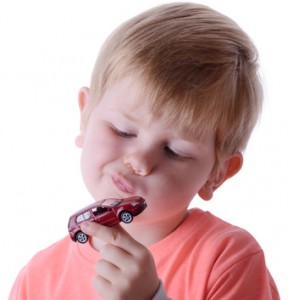 How can we better understand how “risky” a particular person is when driving? Some people are very risky, whilst others are far more cautious and less likely to have an accident. We know that males are more risky than females and that there is increased risk of an accident if you are under 25 years old or over 75 years old, but other factors also contribute to how risky a person is.
How can we better understand how “risky” a particular person is when driving? Some people are very risky, whilst others are far more cautious and less likely to have an accident. We know that males are more risky than females and that there is increased risk of an accident if you are under 25 years old or over 75 years old, but other factors also contribute to how risky a person is.
One approach is to treat the tendency to take risks as a personality trait. This trait can then be measured through questionnaires such as the Traffic Locus of Control ScaleThese questionnaires can tell you a great deal about people and they do predict driving behaviour, but not as much as you might expect. One study found that personality traits could explain 39% of the variability in risky driving and only 20% for accident involvement[3].
It seems that these personality questionnaires can help us to understand driving risk, but only to some extent. Why is this? Obviously there are many other factors that contribute to risky driving and accidents: age, sex, alcohol consumption, etc. However, another issue is how accurately a person responds to a questionnaire.
Social desirability is a bias towards giving an answer on a question that is not necessarily an honest response, but a response that will be viewed more favourably by others. For example, when asked to rate how often you overtake a slow driver on the inside, you may report doing this less frequently than you really do to portray a more socially acceptable image of yourself. This might be even more exaggerated if the questionnaires are being completed for occupational reasons. You really wouldn’t want to tell your employer, or a potential employer, that you frequently undertake!
Is there any way to resolve this issue? It is obviously advantageous to know an individual’s level of risk taking, but does the subjective nature of a questionnaire reduce, at least to some extent, the validity of the data collected from them? If a more objective measure were available, one that could not be manipulated to “look better”, we might be able to make more accurate judgements of whether an individual is a risky driver.
Finger length might provide this more objective measure of risk taking when driving. Although it may sound bizarre, your finger length, more specifically the relative lengths of your ring finger and index finger, is determined by the amount of testosterone that you are exposed to whilst in the womb.
Take a look at your index finger (the second digit, 2D) and your ring finger (the fourth digit, 4D) on your dominant hand – the hand that you write with. In most men, the index finger is shorter than the ring finger, whereas in women, the index and ring fingers tend to be of similar lengths or the index finger is slightly longer than the ring finger. This relationship between the lengths of the index finger and ring finger is called the 2D:4D ratio.
If your index finger is shorter than your ring finger, you have a low 2D:4D and this means that you were exposed to high levels of testosterone prenatally. In contrast, if your ring finger is shorter than your index finger, you have a high 2D:4D and this indicates low levels of prenatal testosterone exposure.
Research has shown a strong relationship between personality and 2D:4D. One study found that people with lower, or more masculine, digit ratios scored higher on measures of sensation seeking[4]. The relationship between digit ratio and sensation seeking seems particularly relevant to driving risk as high sensation seekers are more likely to drive faster than 80 mph, drive after consuming alcohol and race other drivers[5].
A recent study looked directly at the possible relationship between 2D:4D and driving behaviours[6]. They found that people with low 2D:4D ratios, so those with higher levels of prenatal testosterone exposure, had more points on their licence. This seems to suggest that measurement of the 2D:4D ratio may provide a more objective indicator of how likely a person is to drive in a risky manner.
When assessing an individual to identify whether they drive in a risky manner it is important to get as much information as possible about their driving behaviours. Perhaps the measurement of digit ratio could contribute to this initial assessment and help to maximise the benefits of subsequent training.
Dr Victoria Bourne (BA Hons, DPhil)
Counsultant to Driving Risk Management
[1] Ozkan and Lajunen (2005)
[2] Reason et al. (1990)
[3] Iversen and Rundmo (2002)
[4] Austin et al. (2002)
[5] Arnett (1996)
[6] Schwerdtfeger et al (2010)



